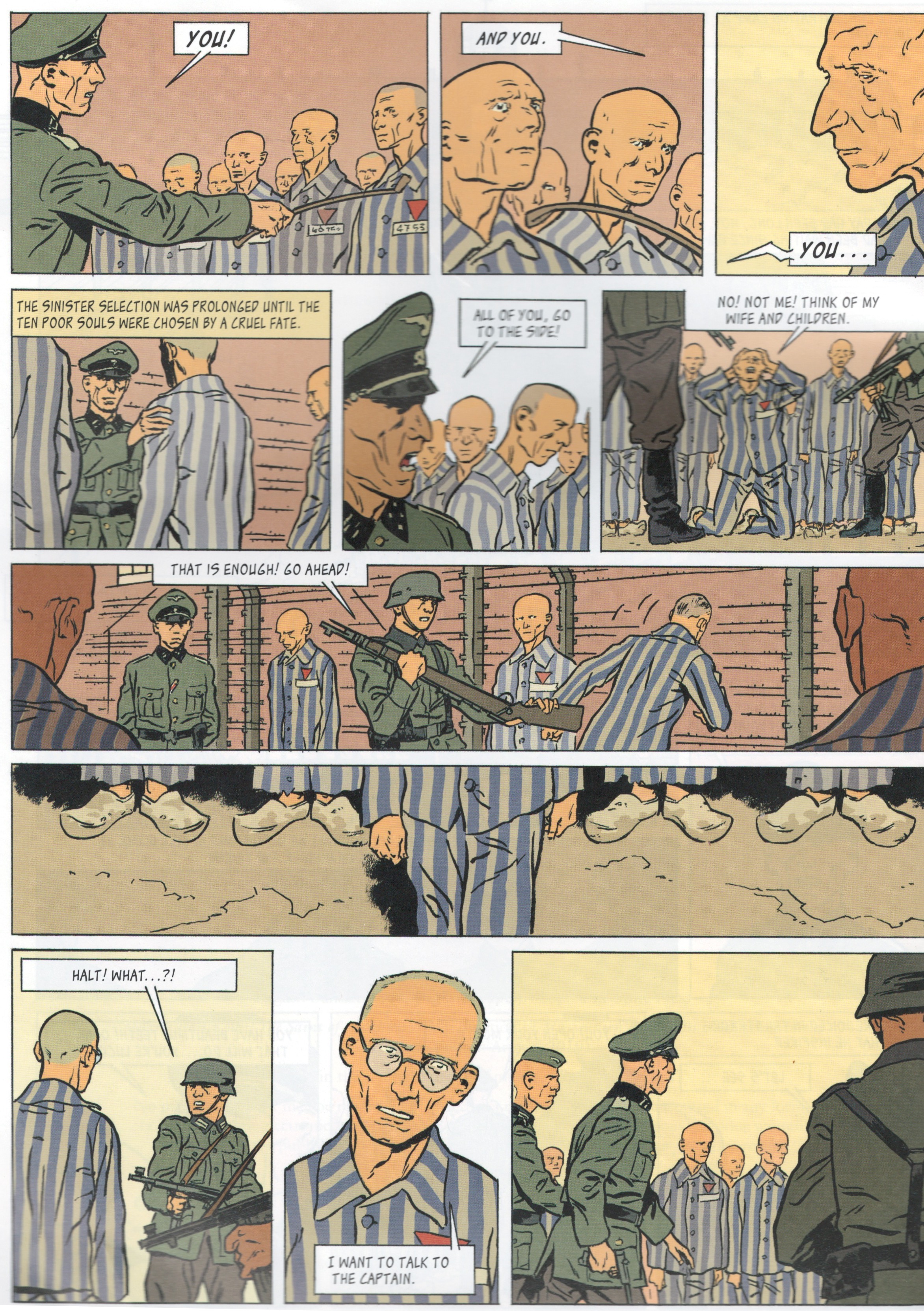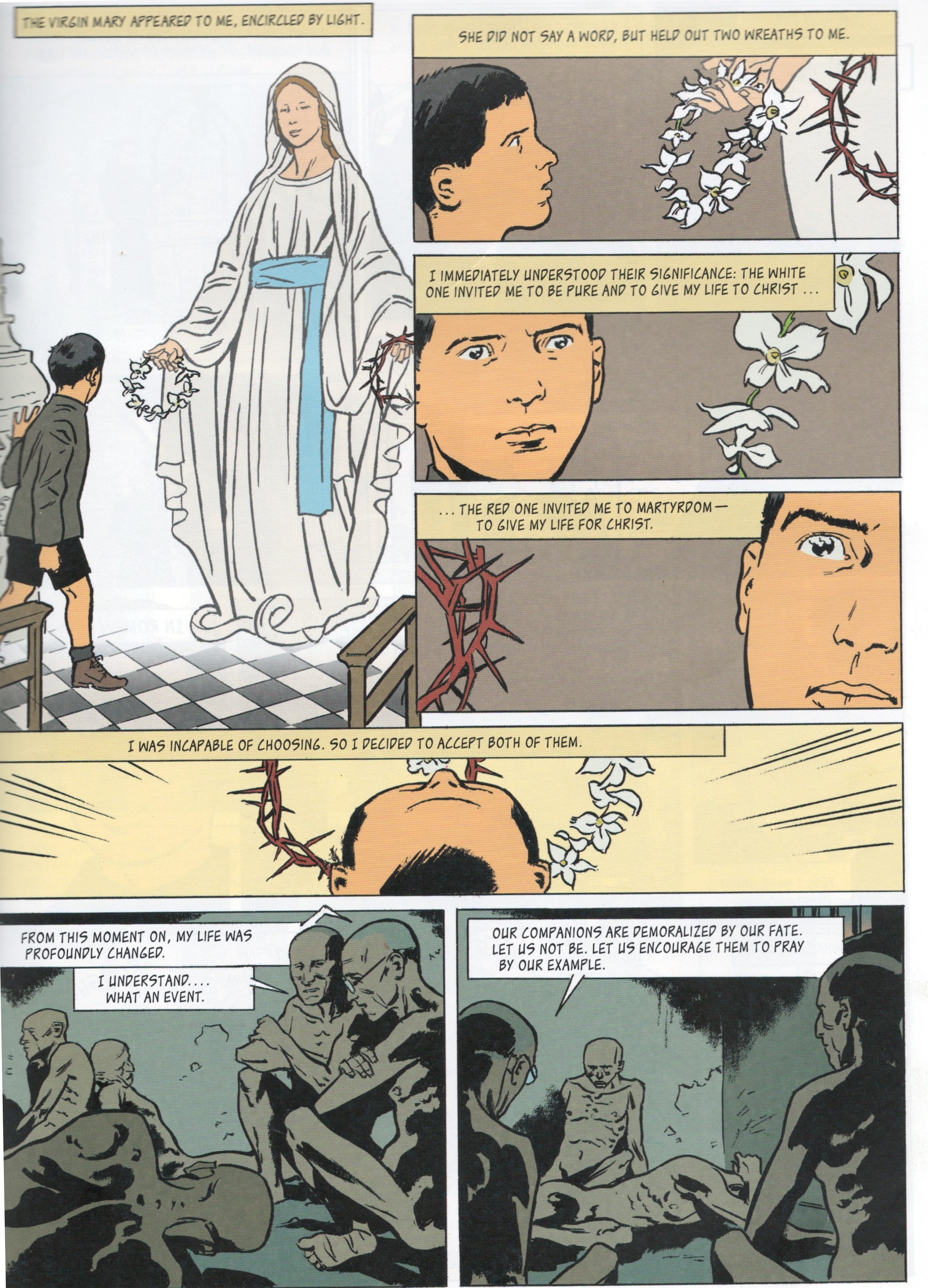St. Maximilian Kolbe Graphic Novel Tells Story of Hope and Sacrifice
BOOK PICK: Maximilian Kolbe: The Saint of Auschwitz

St. MAXIMILIAN KOLBE
The Saint of Auschwitz
By Jean-Francoi Vivier (author) and Denoel (illustrator)
Sophia Institute Press, 2020
52 pages, $14.95
To order: SophiaInstitute.com or (800) 888-9344
Obedience to the will of God was one of the key concerns for St. Maximilian Kolbe, and it was in discerning God’s will for him that he made his final, fateful choice. In a letter found in the Matins reading for his memorial, Aug. 14, St. Maximilian Kolbe writes about obedience:
“Let us love our loving Father with all our hearts. Let our obedience increase that love, above all when it requires us to surrender our own will. Jesus Christ Crucified is our sublime guide toward growth in God’s love.”
Surrender our own will. What words better describe the life and sacrifice of Kolbe? It’s a story whose ending in the death camp at Auschwitz is well-known, but whose particulars may not be as familiar. With Maximilian Kolbe: The Saint of Auschwitz, French writer Jean-Francoi Vivier and artist Denoel have turned the details of that life into a moving and beautifully crafted graphic novel. It’s not an easy story to tell, particularly in a visual medium, and that the author and illustrator have managed the task without sensationalism is no minor accomplishment.
The book begins in Auschwitz in 1941, as S.S. Capt. Karl Fritzsch selects 10 men to die in Cell Block 11 as a punishment for another prisoner escaping. Francis Gajowniczek is among those chosen, and he cries out for mercy. At that moment, Kolbe steps forward and asks to speak to the captain, notorious for his cruelty, and offers to take the man’s place. One of the strange things about the story is that the captain accepts the request, rather than beating Kolbe for his insolence. The 10 men are stripped naked and left to die of hunger and thirst as a warning to others.
Inside the cell block, one of the men recognizes Kolbe and shows him the Miraculous Medal he has managed to hide from the guards. Through conversation with this man, Kolbe’s life is told in a series of flashbacks. It’s a somewhat awkward conceit, as two men, stripped naked and left to starve, review the highlights of Kolbe’s story, but it works dramatically, particularly for this medium. There’s an effective shift in visual style that delineates the past and present narrative strains. The present is rendered in deep inky blacks, browns and grays that recall the work of comic-book artist Mike Mignola, while the past is characterized in blue and white.

St. Maximilian Kolbe’s story was more than just its ending, and many of the details may be unfamiliar to readers. It begins when, as a child, he experiences a vision of the Blessed Mother offering him two wreathed crowns: a white one representing purity and a red one representing martyrdom. He chooses both.

At 17, he becomes a Franciscan, receiving the name Maximilian Mary and is sent to Rome to study. A few months after the start of World War I, he takes his perpetual vows, and while the war is still raging, he founds the Militia of the Immaculata. Dedicated to preaching the Gospel and spreading devotion to the Miraculous Medal, the group publishes the first issue of the Knights of the Immaculata journal in 1922, and by 1938, it is circulating 1 million copies and has its own printing press.
Over the course of his life, he helps establish a community that grew to 700 brothers, fulfills his dream of becoming a missionary by being sent to Japan, expands his publication into new areas and new languages, forms novices, and encourages countless people to take up devotion to the Miraculous Medal. While all this is happening, the war drums grow louder, and the brothers start caring for sick and displaced refugees. On Sept. 19, 1939, he is arrested for the first time, but released after being beaten. On May 28, 1941, he is arrested for the last time and spends his final months ministering to fellow prisoners at Auschwitz.
Maximilian Kolbe: The Saint of Auschwitz relates this story in a brisk 48, oversized pages and concludes with several pages of photos from his life, work and canonization. It’s certainly an excellent choice for parents and home-schoolers looking to introduce this modern martyr to younger readers, and the quality is such that adults will enjoy it, as well. Although there are, of course, grim elements to the story, it is never unduly graphic or exploitative, and the message is ultimately that of hope, joy and sacrifice in one of the darkest passages of human history.
Thomas L. McDonald writes about interesting Catholic facts and features at WeirdCatholic.com.
- Keywords:
- book picks
- st. maximilian kolbe
- thomas l. mcdonald

















